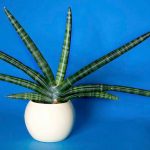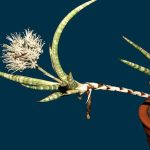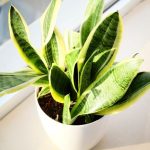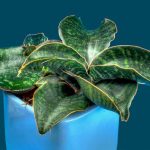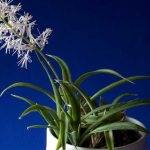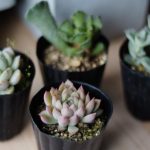A resilient perennial plant known as Sansevieria zeylanica, or bowstring hemp, hails from the South East Asian region, specifically India and Sri Lanka. Bearing a striking resemblance to the snake plant, this vividly green beauty boasts captivating leaf stripes and is celebrated for its hardiness and adaptability, making it an ideal houseplant choice that also enhances indoor air quality.
Similar to other snake plant varieties like sansevieria cylindrica, the bowstring hemp is a favored selection for both indoor and outdoor cultivation. Dive into the realm of bowstring hemp cultivation and care with us.
Recommended Products for Growing Sansevieria Zeylanica:
- Safer Brand Insecticidal Soap & Pyrethrin Concentrate
- Neem Bliss 100% Cold Pressed Neem Oil
Quick Care Guide
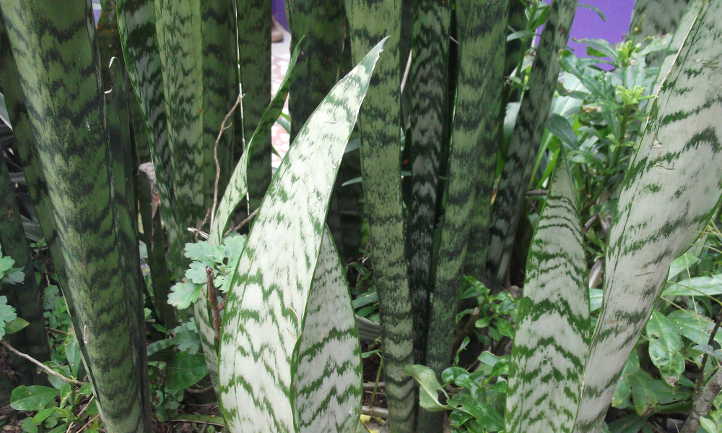

| Common Name(s): | Bowstring hemp |
| Scientific Name | Sansevieria zeylanica |
| Family: | Asparagaceae |
| Zone: | 9 to 11 |
| Height & Spread: | Up to 2-3 feet tall, up to 1 foot across |
| Light | Full sun to partial shade |
| Soil | Well-draining sandy loam |
| Water: | Water when soil dries out, roughly 1x/week |
| Pests & Diseases: | Mealybugs, spider mites, root rot |
All About The Bowstring Hemp
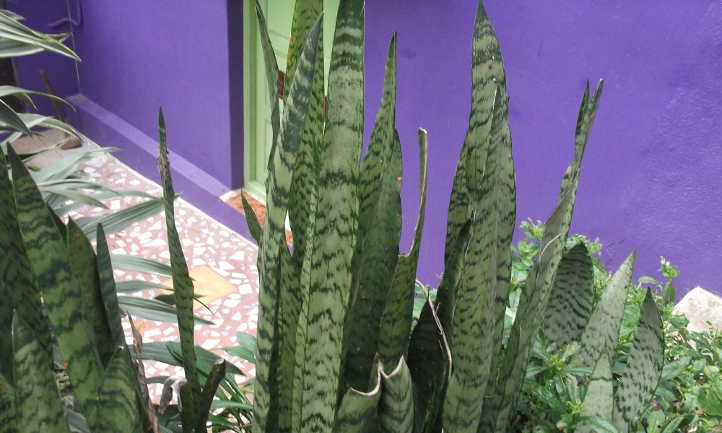

Bearing striking dark-green sword-shaped leaves adorned with horizontal creamy stripes, the bowstring hemp adds elegance to any space. While it occasionally blooms with greenish-white fragrant flowers, it’s primarily grown for its medicinal and fiber properties, with roots used in ointments and leaves in various textiles.
Take caution with this plant’s mildly toxic nature, similar to other sansevierias, which can cause discomfort if ingested. Keep it away from children and pets.
Caring For Your Sansevieria Zeylanica
Sansevieria zeylanica is known for its slow to moderate growth rate and ability to withstand neglect. Although resilient, it thrives best with some targeted care practices.
Light and Temperature
Indoor growth demands ample light, favoring sunny windows or bright indirect lighting for optimal coloration. Outdoor plants thrive in bright but sheltered sunlight, avoiding scorching heat that can cause leaf discoloration. Maintaining temperatures between 60°F to 75°F is ideal for this tropical plant’s well-being.
Water and Humidity
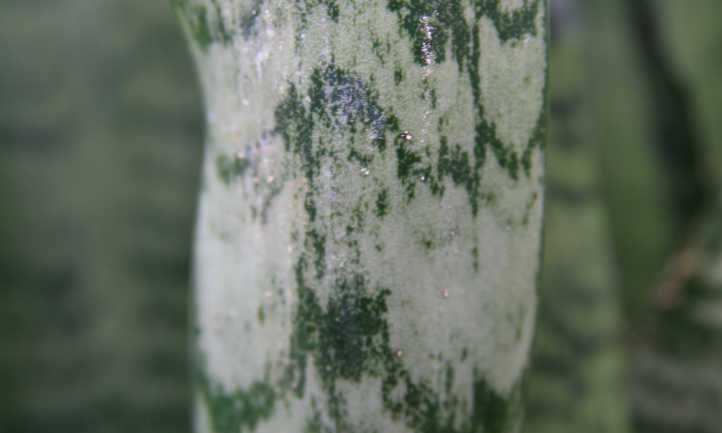

To foster optimal growth, provide semi-arid to humid conditions for your plant. Indoor plants benefit from increased humidity using pebble trays, while outdoor plants can enjoy the moisture from a damp mulch. Be mindful not to overwater, ensuring the soil dries out between waterings for healthy plant development.
Watering
The recommended way to water your plant is to water slowly and deeply, ensuring the water reaches a depth of at least 3-4 inches into the pot’s base for potted plants. For in-ground plants, the same principle applies.
During the winter months, adjust your watering frequency as the plant enters its dormant phase, requiring less water. However, in the active growth phases of spring and summer, your plant will need more frequent watering to thrive.
Soil
To create an optimal environment for your plant, choose a well-draining sandy loam. This type of soil allows for adequate moisture retention between waterings while also effectively draining excess water to prevent root rot. Ensure no standing water accumulates in the soil to maintain plant health.
Fertilizer
Sansevieria zeylanica, being a light feeder, doesn’t require heavy fertilization. A monthly dosage of general-purpose plant fertilizer at half-strength is sufficient. Some gardeners opt for a slow-release granular feeding in the spring with satisfactory results.
Repotting
Similar to snake plants, bowstring hemp prefers to be slightly root-bound. Only repot when symptoms like yellowing or leaf loss become evident. When repotting is necessary, select slightly larger pots with well-draining sandy loam. Adjust the planting depth to match the original soil level for optimal growth.
Propagation
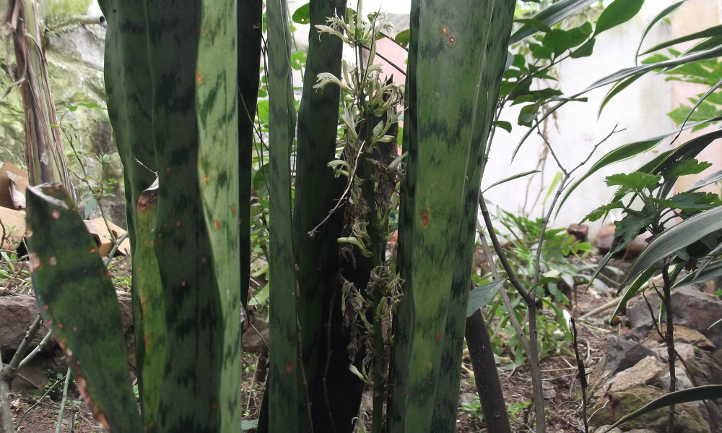
To propagate sansevieria zeylanica, utilize leaf cuttings or division methods similar to snake plants. Division is recommended for more mature plants as it ensures the preservation of specific cultivars. Cuttings may revert to their parent form occasionally.
Pruning
Regular pruning is generally unnecessary for bowstring hemp. Trim any outer leaves that bend over with clean shears. Infrequent maintenance is limited to removing dead or damaged leaves, with the option to trim damaged portions or remove the entire leaf as needed.
Troubleshooting
Pests
Common pests on bowstring hemp include mealybugs and spider mites, which can be treated with appropriate measures. Insecticidal soap and neem oil are effective treatments to eliminate these pests and prevent infestations effectively.
Diseases
Root rot caused by overwatering is a primary concern for bowstring hemp. To prevent this issue, ensure well-drained soil and avoid excessive watering, allowing the soil to dry out properly between waterings.
Frequently Asked Questions
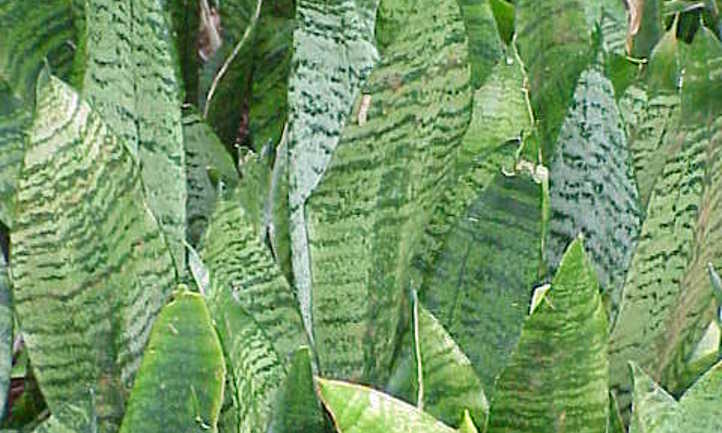
Q. When should I repot my bowstring hemp?
A. Repotting is recommended when the plant appears root-bound or every 2-5 years. This is also an opportune time to divide the plant to promote healthy growth.
Q. Why are my bowstring hemp leaves falling over?
A. Bowstring hemp leaves may droop due to overfertilization or overcrowding. Consider trimming the leaves back to promote better plant health.
Q: Is sansevieria zeylanica the same as sansevieria trifasciata?
A: While closely related, they exhibit subtle differences in leaf patterns. While some consider them synonyms, botanically, they maintain distinct identities, potentially merging in the future.

